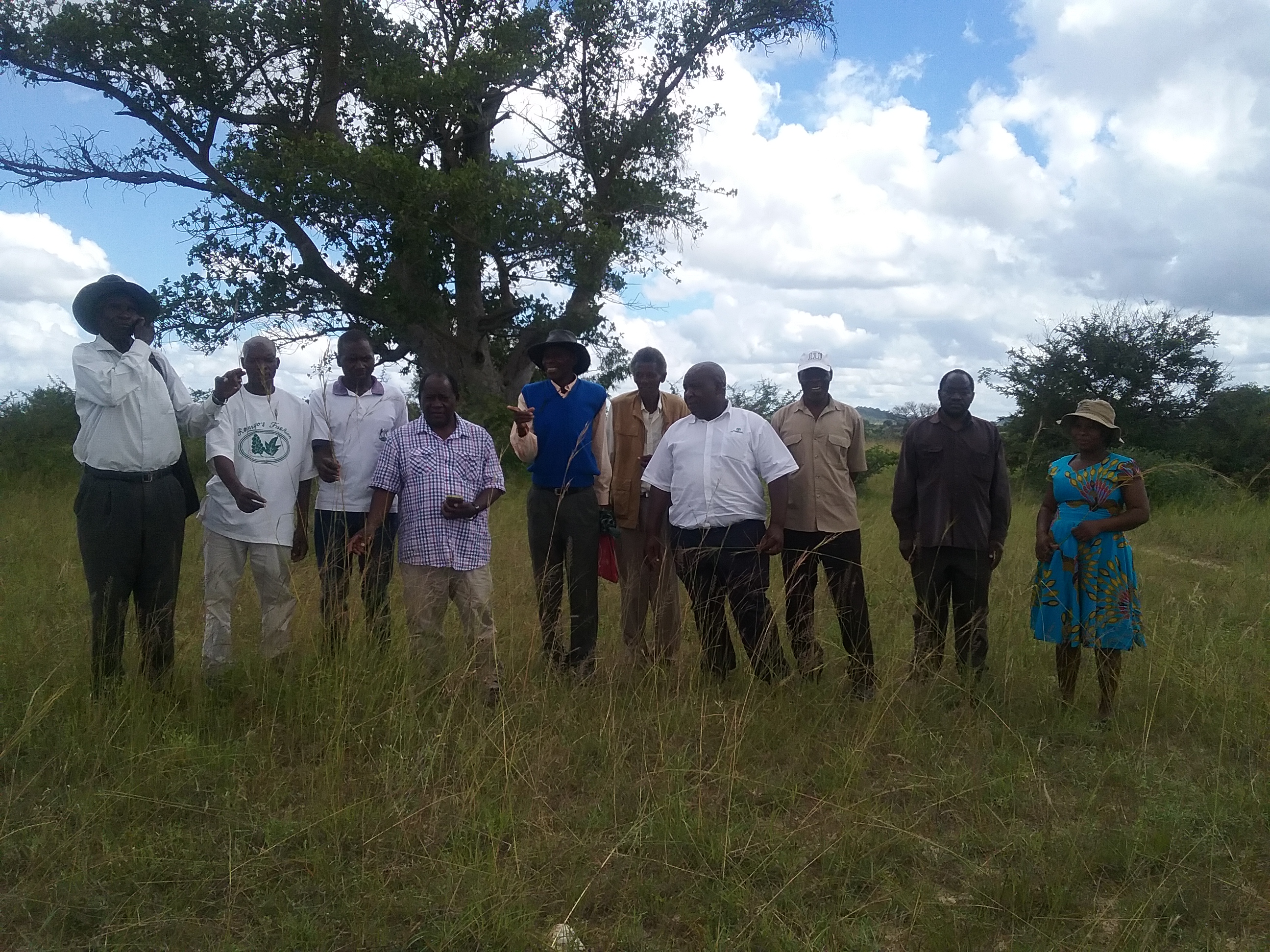Project Title: “Enhancing healthy wealthy, food secure rural communities, with sustainable livelihoods in ecologically stable, highly productive Rangeland ecosystems in Zimbabwe, Kenya and Uganda”
Vision
To empower smallholder rural communities in arid and semi-arid areas of Zimbabwe, Kenya, Uganda and globally to manage their lives and resources holistically, to improve their quality of life and that of future generations
Project Objectives
1. Land Management:
1. Rehabilitate degraded rangelands and restore healthy grasslands for increased fodder.
2. Recharge underground water to restore natural water sources and provide drinking water.
3. Reverse desertification
Project Objectives
1. Land Management:
1. Rehabilitate degraded rangelands and restore healthy grasslands for increased fodder.
2. Recharge underground water to restore natural water sources and provide drinking water.
3. Combat effects of climate change and reverse desertification.
2. Livestock Management:
1. Develop livestock management plans, increase herd productivity, facilitate herding and reduce stock loses.
2. Create markets for livestock and develop Community Agro-processing focusing on Abattoirs and Milk Centers.
3. Community:
1. Develop farmers’ eco-literacy, transfer of knowledge and management skills.
2. Develop self-reliant, motivated, action oriented and cohesive communities.
3. Enhance food and nutrition security, increase income, and eliminate poverty and hunger for sustainable livelihoods.
4. Attract investment, create employment and attain rural economic growth.
5. Encourage eco and cultural tourism.
Activities are based on the Major Programme Components
1. Rangelands Management (planned grazing and combined herding)
2. Livestock Management (improved productivity and bull schemes)
3. Livestock Marketing Component (Auctions, Community Abattoirs)
4. Governance Component: Community Development (empowerment, capacity building, support for organizational and management structures).
2. Rangelands Management Component
1.1 Foster grazing planning and forage assessment;
1.2 Develop reliable and clean water sources for livestock;
1.3 Instil Fire prevention & response;
1.4 Stop Deforestation;
1.5 Foster Land use planning;
1.6 Resuscitate herding and any other best rangelands and livestock management practices in communities;
1.7 Instil sustainable natural resource usage and management;
1.8 Monitor rangeland health;
1.9 Accelerate over-seeding (Planting grass through animal dung/ grazing and overnighting animals in spots where the grass is to be dropped)
1. Livestock Management Component
2.1 Train on Bull/cow ratio; Herd structure; Vaccination and health programme; Animal safety; Mortality management;
2.2 Implement Trials on strategic nutrients supplementation (sampling, analyse and apply)
1. Livestock Marketing Component
3.1 Assist farmers identify marketable livestock for various sectors of the market (formal and informal);
3.2 Coordinate with project committees and buyers about availability of marketable livestock from the farmers;
3.3 Share marketing related information with farmers &
The HLLM project evolving at the Njeremoto Biodiversity is demonstrating the Indigenous Shona Knowledge on Grazing and Land Management. In the Shona culture, the land evolved with herding animals. Hence the absence of one result in the destruction of the other.
The conventional grazing management belief that too many animals result in overgrazing is a misconception of the semi-arid savanna environments of Southern Africa where these environments evolved with thousands of herding grazers such as wildebeests and buffalo. The Shona believe that overgrazing is caused by inadequate recovery period for grazed plants. Further, they believe that in conventional western grazing management practice, overgrazing is a result of domesticated animals overstaying on the same piece of land (continuous grazing) or returning too soon to the grazed area (rapid rotational grazing systems).
Opportunity existed on vast areas of degraded land to utilize animals (domestic and wildlife) to heal the land, improve water cycles and build biodiversity, while enhancing food security, reducing poverty, and establish ecological stability at a landscape scale hence positively changing peoples’ life.
This project is exploring and evolving new technology for semi-arid rangelands management as well as empowering and capacitating the humans with skills and tools to sustainably manage the ecosystem while ensuring sustainable livelihoods for the present and future generations.
Results
Intensification of community empowerment on the use of grazing plans by herding clusters in the ward was enforced.
The waterpoint coupled with improved grass saved the community cattle from dying in the severe drought that was experienced during the period.
Other areas without the programme lost cattle from the drought. Also, the cattle produced more milk and manure. The manure was then used to fertilize the vegetable garden at the water point. Thanks to Tudor Grants the Mufiri community cattle were saved from the devastating drought.
Locally, NBI received an award entitled Communicator of the year 2013 from the Banga Chieftainship in Shurugwi District, Zimbabwe. The citation is, “For his efforts to communicate directly from Ward Level to Village Level on the Holistic Land and Livestock Management Program in Ward 5 Shurugwi District, Zimbabwe. He is a real Community Empower and Capacity Builder”.
Internationally, in 2014 NBI received Teach A Man to Fish Pan-African Award Winners. NBI was Country Winner for ZIMBABWE. The citation of the award is, “Njeremoto Biodiversity Institute (NBI) integrates land and livestock management in its teaching.
“Community mobilization is something done by community rather than for the community”.
OSMOND MUGWENI
Achievements
NBI achieved much in line with implementation of planned project Outputs on Land Management, Livestock Management and Community empowerment
Land Management
Restoration of healthy grasslands was achieved to a greater extend.
Rehabilitation degraded rangelands was demonstrated and achieved
Restoration of natural water sources was being continually achieved.
Also, being achieved was recharging of underground water.
There was marked improvement in reversing desertification
Livestock Management
Improve herd management was achieved by combining community herds and practising herding guided by grazing plans.
Increased herd productivity was achieved. Increased calving percentage of 30% of the breeding cows.
Creation of Community agro-processing, such as, Community Abattoirs and Community Milk Centres for Amasi and Yoghurt was not achieved. This was due to lack of a budget line the grant and we could not secure extra funding from other partners, In Phase IV, funds permitting, this socio-economic benefit of the programme would be emphasised.
Community Empowerment
Increase food and nutrition security was not yet fully achieved. This will be emphasised in Phase IV. The Sustainable Lifestyles and Education (SLE) Programme
Theme of the Call for proposals: Delivering on sustainable low-carbon lifestyles - Mainstreaming Low-Carbon Sustainable Lifestyles through innovative initiatives or upscaling of successful high-impact initiatives
ii. Project proposal for: Small-scale: proposals for projects to build partnerships with budgets between 100,000 and 200,000 US dollars
Since NBI Zimbabwe is a Partner of the UNEP/FAO 10YFP SFS Programme we can submit an application to this call.
THE PROPOSAL
Duration of projects: 18 months. 1st July 2019 to 30th December 2020
Project Title: “Enhancing healthy wealthy, food secure rural communities, with sustainable livelihoods in ecologically stable, highly productive Rangeland ecosystems in Zimbabwe, Kenya and Uganda”
Partners: Who are also Tudor Partners can link up with NBI=Zimbabwe and play the identified roles as identified below
1. LEAD Organization: Njeremoto Biodiversity Institute Zimbabwe (NBI-Zimbabwe) Technical Partner: Partner of the UNEP/FAO 10 YFP SFS Programme
2. Conservation Agriculture Namibia (CAN Namibia) Technical Partner
3. Pelum Kenya Country Coordinating Partners
4. Pelum Uganda Country Coordinating Partners
5. Pelum Zimbabwe Country Coordinating Partners
6. SACDEP Kenya Implementing Partner Kenya
7. TSURO Zimbabwe Implementing Partner Zimbabwe
8. CELACT Zimbabwe Implementing Partner Zimbabwe
9. Harriet (Organization) Uganda Implementing Partner Uganda
10. Bindura State University Zimbabwe Academic Technical Partner.
External source(s)
Image

Osmond Mugweni HLLM Tudor Funded Ward 5 Mufiri Outreach Community Project
Project start date
01/05/2019
Project end date
30/09/2020


